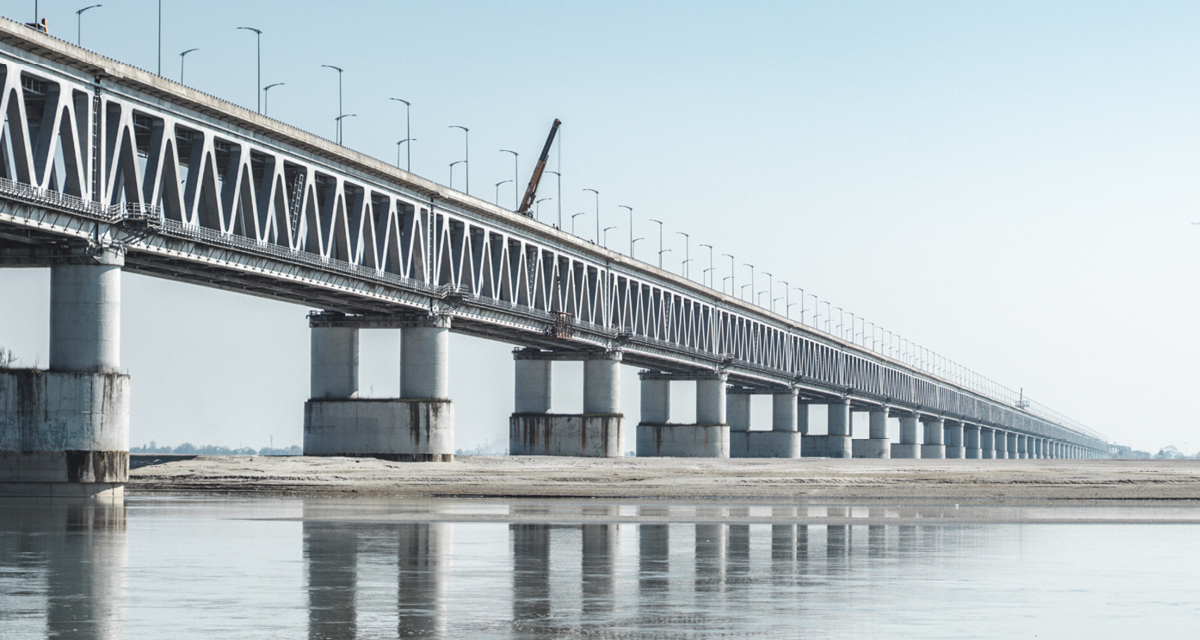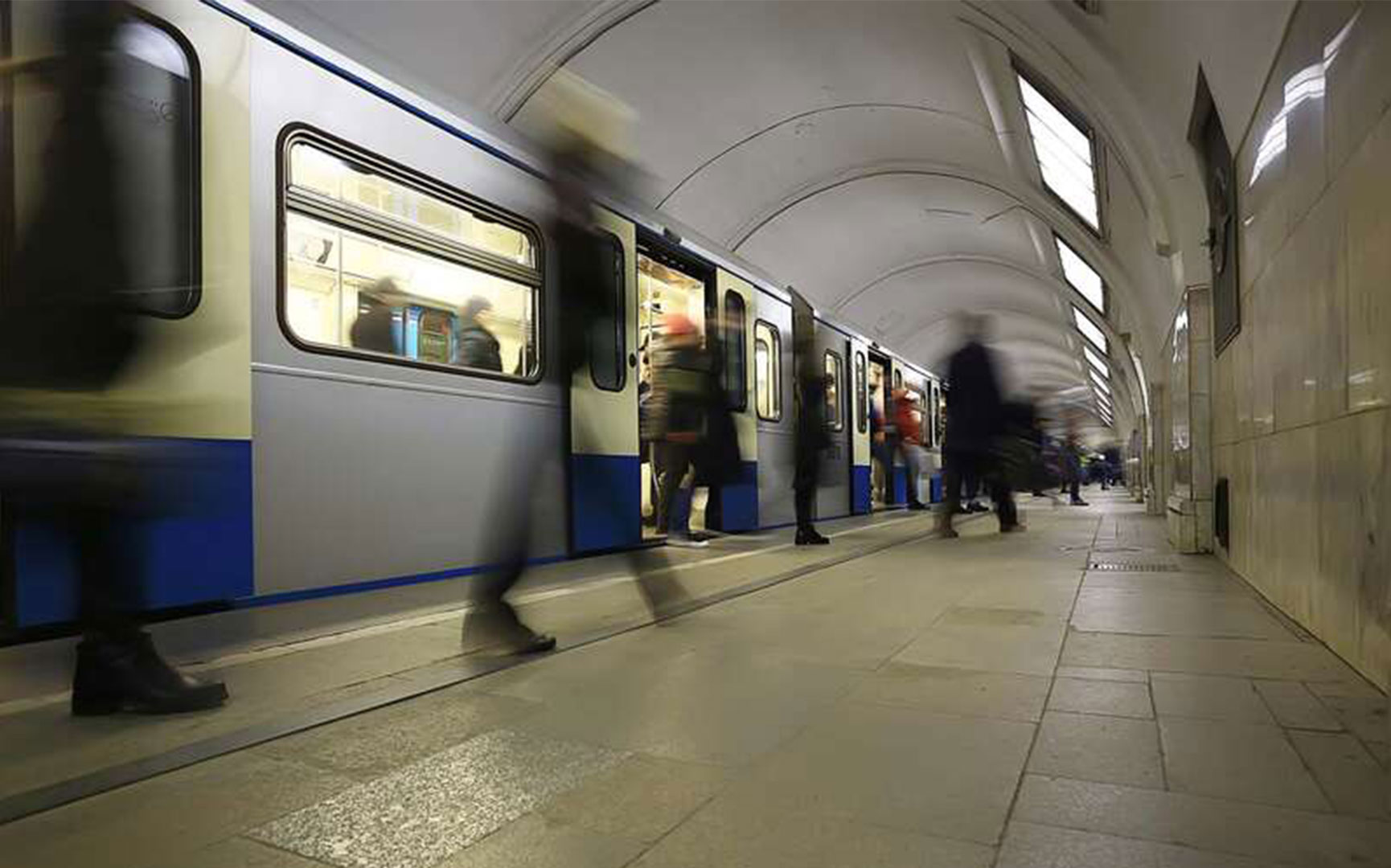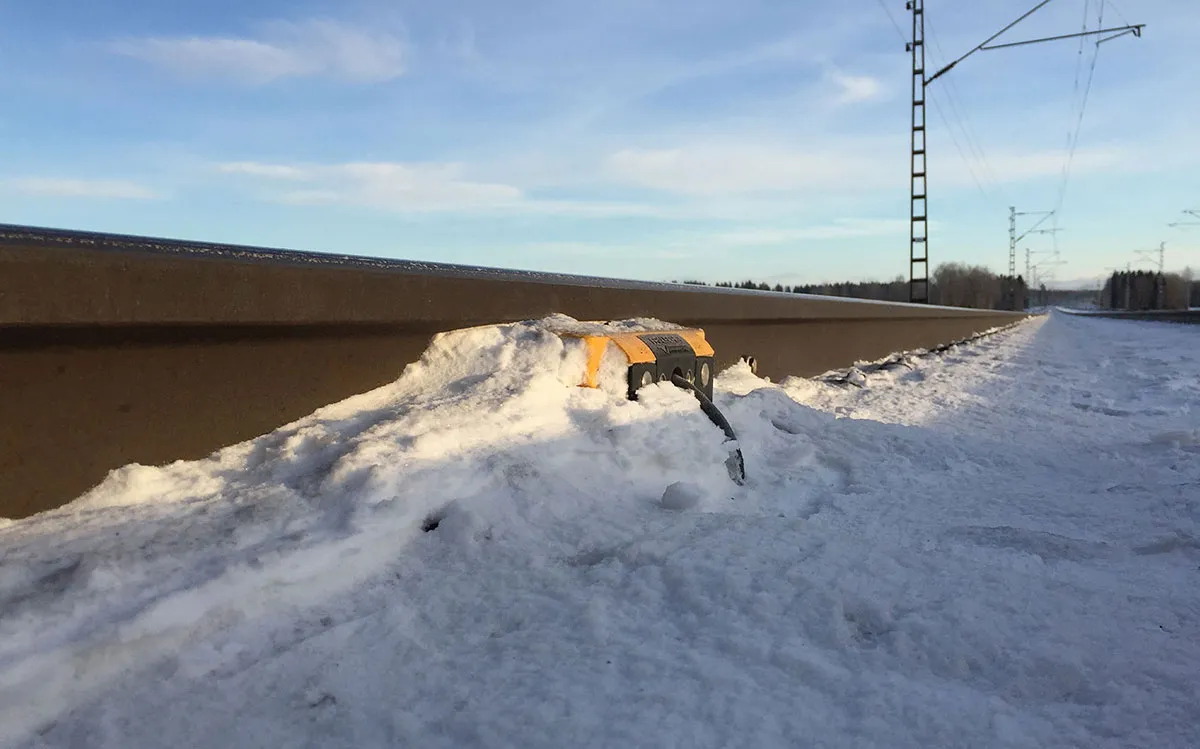Frauscher Sensor Technology has completed the divestiture to Wabtec Corporation.
Notification Center

Train DetectionIndia
Ensuring reliable rail operations across India´s longest rail-road bridge
The Bogibeel Bridge is India’s longest rail-road bridge that connects Assam and Arunachal Pradesh, carrying both rail and road traffic across the Brahmaputra River. Harsh environmental conditions and structural constraints made conventional signalling unworkable. The Frauscher Advanced Counter FAdC® axle counting system was selected for its proven reliability and low maintenance under these challenging conditions.
The Bogibeel Bridge, India’s longest rail-cum-road bridge at 4.94 km, is a strategically vital link connecting Assam and Arunachal Pradesh over the Brahmaputra River. As the country’s first fully welded steel bridge, it offers durability and reduced maintenance, while significantly improving mobility and regional connectivity. Its operation required a highly reliable railway signalling system to cover a 13 km block section, including the bridge span, where conventional track circuits were unsuitable due to structural and environmental constraints.
Frauscher’s Train Detection System was selected as the ideal solution. Offering SIL 4 safety, flexibility, and proven performance, it was implemented with the Wheel Sensor RSR180 at Tangani Station and Dhamalgaon Block Cabin. A Dual Detection configuration ensured reliability, while media redundancy was achieved through both OFC and Quad mediums, safeguarding against communication failures. The system’s distributed architecture with redundant power and communication further enhanced safety and efficiency.
Key features included co-operational reset functionality to minimise delays, the Frauscher Diagnostic System FDS for real-time monitoring, and patented rail claws for quick, non-invasive sensor installation. With no trackside electronics required and Indian Railways staff trained to operate it, the system delivered a cost-effective, future-ready solution tailored to Bogibeel Bridge’s demanding environment.
Exceptional reliability
The distributed architecture of the FAdC® enhanced operational safety and dependability, ensuring smooth and secure railway operations.
Seamless installation & track integrity
The Wheel Sensor RSR180 allowed effortless installation without drilling and facilitated easy detachment during maintenance, preserving track integrity.
Uninterrupted operation with media redundancy
By leveraging both Optical Fiber Cable (OFC) and Quad mediums, the Frauscher system ensured fail-safe performance, thereby minimising disruptions.
Minimal maintenance & enhanced efficiency
The absence of active outdoor electronics significantly reduced maintenance demands and eliminated the need for earthing and enhancing long-term efficiency.
Cost-effective alternative
Delivering the same level of redundancy and safety as HASSDAC, the FAdC® provided a more economical solution without compromising on performance.
This might also interest you

Data TransmissionIndia
South Central Railway
Train DetectionUnited States of America
Tracking Trains in Houston

Train DetectionPoland
Metro Warsaw

Train DetectionUnited States of America
Reducing Delays in a Metro (subway) Environment
